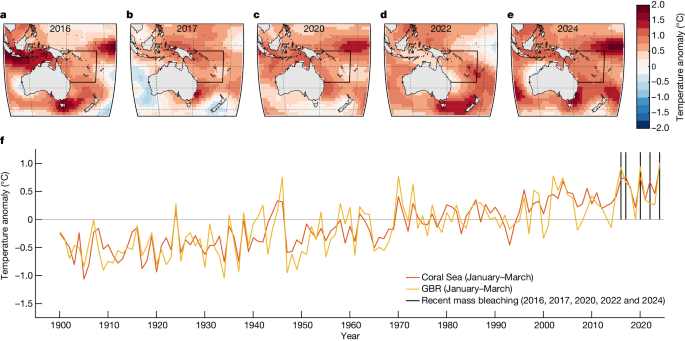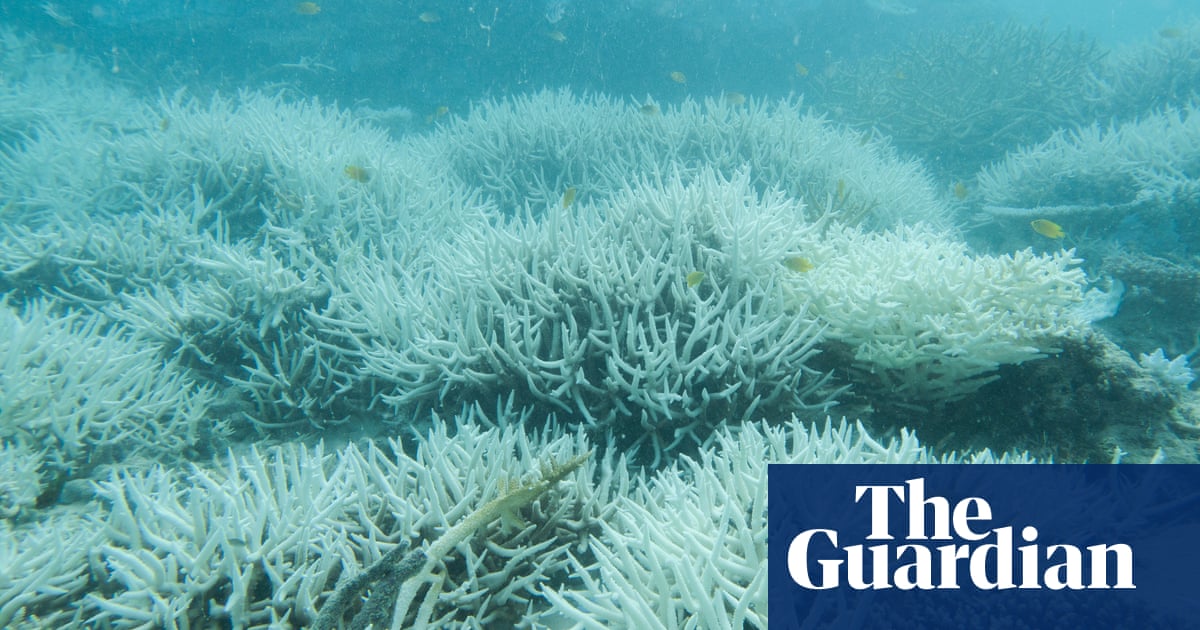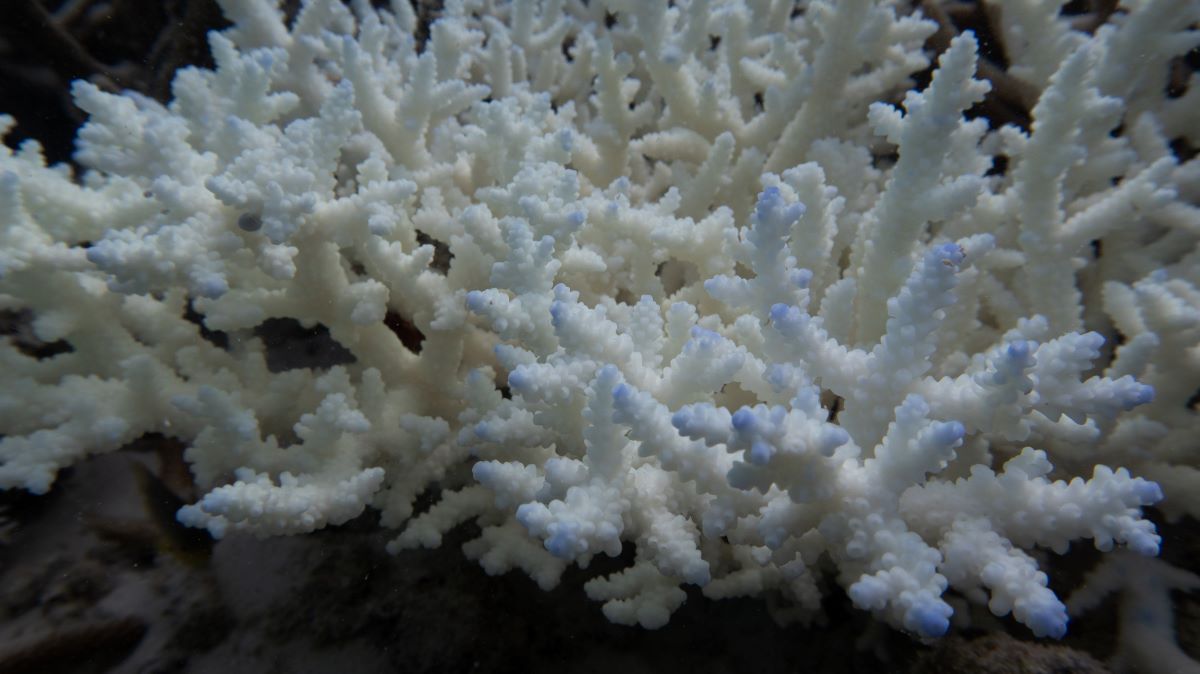Scientific research has determined that the ocean temperatures around the Great Barrier Reef are now hotter than they have been in the last 400 years. The research was published in the journal Nature.

Also Read: Pakudyptes hakataramea: One of the Tiniest Penguins Ever Discovered
Researchers have utilized coral core samples, which serve as records to reconstruct 400 years of summer sea surface temperatures in the Coral Sea.
These cores contain chemical indicators that show past environmental conditions.
The study reveals that the past decade has seen the highest temperatures recorded in the region in four centuries.
In particular, the years 2014, 2017, 2020, and 2024 have set new records with 2024 being the warmest by a huge margin.
These high ocean temperatures align with the timeline of mass coral bleaching events with five major occurrences since 2016.
The study’s climate model simulations show that climate change is the primary driver of rising sea temperatures.
The findings point to anthropogenic factors as responsible for the warming experienced in recent decades.
The extreme heat has already resulted in five mass bleaching events over the past nine years causing damage to the reef’s ecology.
Coral bleaching occurs when stressed corals expel the algae living within them, leading to a loss of color and essential nutrients.
If this trends continue the reef could face near-annual bleaching, severely threatening its ecological integrity and biodiversity.
The study warns of catastrophic consequences for the reef’s unique marine life, which depends on the coral for habitat and survival.
The Great Barrier Reef is home to an estimated 1,500 species of fish, 411 types of hard coral and dozens of other species.
The loss of coral habitat could lead to a decline in these populations.
The reef supports a tourism industry worth approximately $6.4 billion annually and provides employment for over 64,000 people.
The research utilized climate models alongside coral analysis to trace ocean temperature changes over the centuries.
Long-lived corals in the reef, which contain historical temperature records within their skeletons were analyzed.
These coral records were then compared with modern temperature observations to build an understanding of historical and current ocean temperatures.
The study links these ocean temperatures to greenhouse gas emissions from fossil fuels. The scientists concluded that the extreme temperatures of recent decades are a direct result of human activities particularly the burning of fossil fuels.
Also Read: Moon’s Thin Atmosphere is Made by Meteorite Bombardment
The scientists describe the current situation as an existential threat to the Great Barrier Reef. Without immediate and huge reductions in greenhouse gas emissions, the reef’s survival is at serious risk.
The findings come shortly after the World Heritage Committee decided against placing the reef on its in danger list, though they plan to reconsider in 2026.
The reef has experienced its fifth mass coral bleaching event in just eight years. Bleaching occurs when corals, stressed by heat, expel the symbiotic algae that provide them with nutrients and color.
Surveys revealed that coral cover in the northern and central parts of the reef was at its highest since monitoring began in the 1980s.
The continuous warming has put this recovery at risk with scientists from the Australian Institute of Marine Science describing the bleaching as the most severe on record.
Researchers reconstructed temperature records for the three-month period of January to March from 1618 onwards.
They discovered that 2024 is the hottest year in over four centuries with temperatures 1.73°C higher than the pre-1900 average.
The research involved an analysis of coral skeletons, utilizing the chemical makeup of the coral to infer water temperatures.
This method has proven effective in painting a detailed picture of how ocean temperatures have evolved over time.
The reconstructed temperature data was cross-verified with samples from the Great Barrier Reef and modern instrumental observations.
Corals act as natural record-keepers of ocean temperatures. Each year, they lay down bands of dense and less dense skeletons.
The chemical composition of these bands including elements like strontium, changes with temperature.
Scientists employed advanced techniques to drill into coral skeletons and collect core samples. These samples were analyzed under visible and UV light to reveal historical temperature patterns and assess how they correlate with modern observations.
Also Read: Possible Signs of Life in Venus’s Atmosphere, Scientists Reveal























